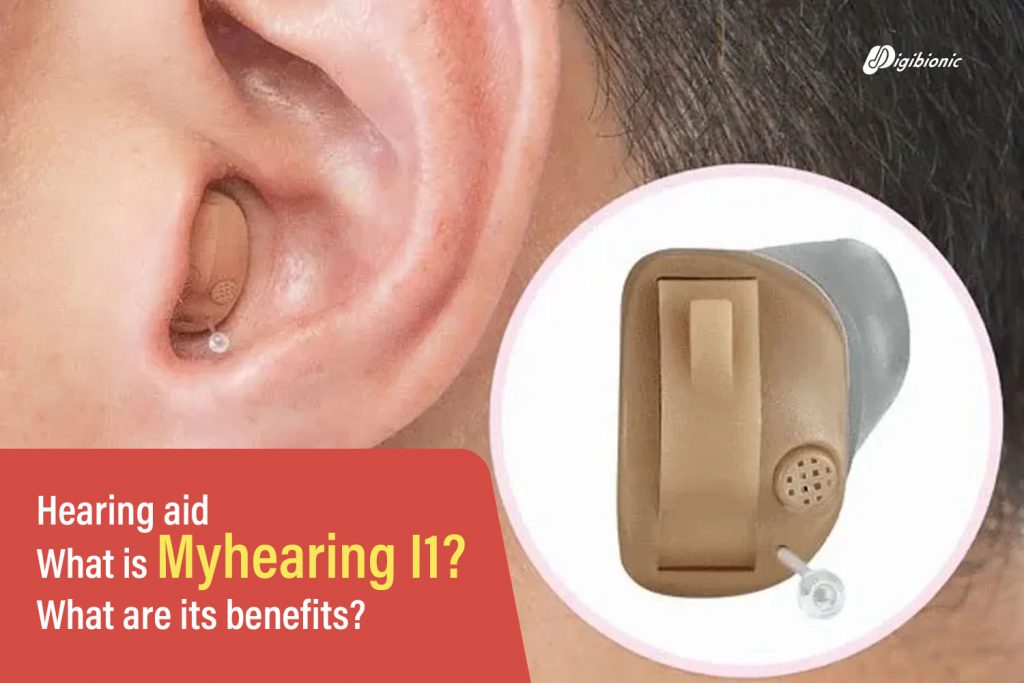
Mimitakara hearing aid, in-ear myHearing I1, special price today: only 25,000 THB per pair. Don’t wait—call 02-115-0568. Try it for free today at any Digibionic branch near you. Free hearing test service available.
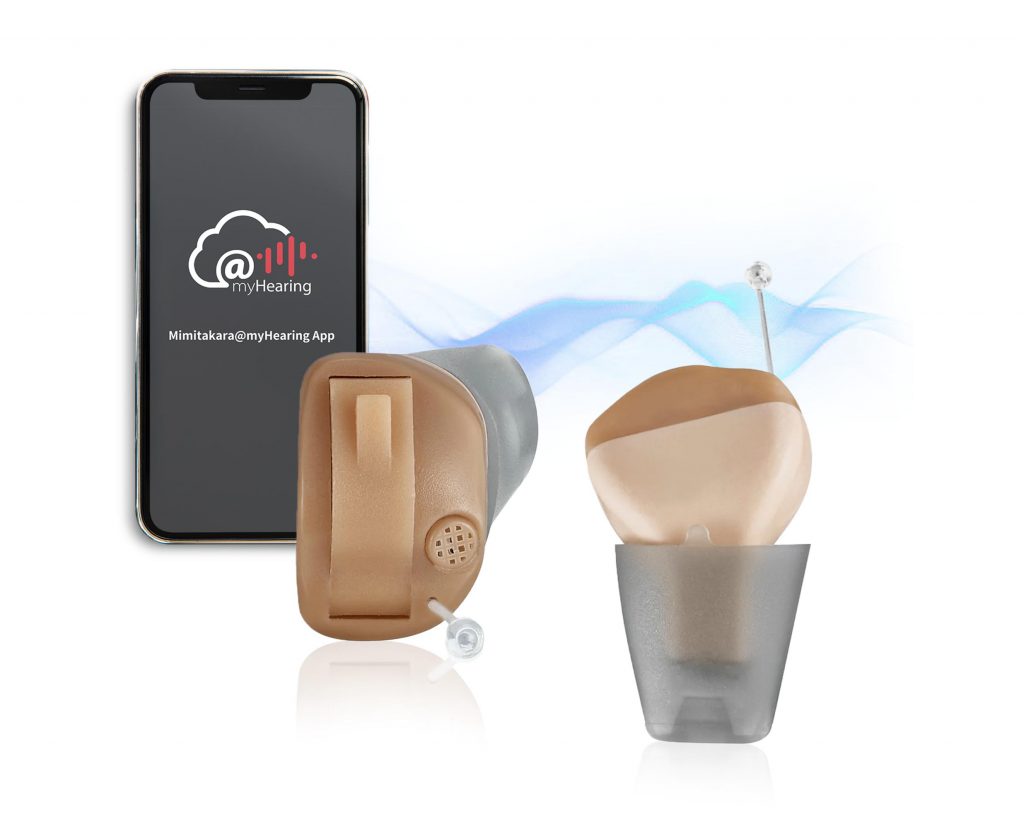
It is a great option for elderly users with mild to moderate hearing loss, offering comprehensive features and comfortable use. These include noise reduction, automatic sound adjustment, and iCloud connectivity. It supports the world’s first cloud-based hearing assessment, allowing hearing specialists to adjust the sound remotely, making the MyHearing I1 a highly efficient hearing aid. When purchasing an In-the-Ear (ITE) hearing aid, several factors should be considered to ensure it meets the user’s needs. Let’s get to know the basic operation of in-ear hearing aids before buying, including their components, adjustment methods, and how they work.
Microphone: Captures sounds from the environment and converts them into electrical signals.
Sound processor: The electrical signals are sent to the sound processor to adjust the sound according to the user’s needs.
Amplifier: Increases the volume of the processed sound signals.
Speaker (Receiver): Delivers the amplified sound signals into the user’s ear canal.
Sound reception: The microphone picks up external sounds, including speech, noise, and other environmental sounds.
Sound processing: The sound signals are sent to the sound processor, which uses digital technology to adjust the sound according to the user’s hearing. This processing includes noise reduction and speech amplification.
Amplification: The processed sound signals are sent to the amplifier to increase volume based on the user’s hearing loss.
Sound delivery to the ear: The amplified signals are sent to the speaker, located in the user’s ear canal, to provide clear and louder sound.
Initial adjustment: A hearing specialist adjusts the hearing aid to match the user’s level of hearing loss using specialized tools and software.
Usage: The user can easily and comfortably insert the ITE hearing aid into the ear. ITE hearing aids usually have volume controls and listening programs, allowing users to adjust settings according to different situations.
Maintenance: Regularly clean the hearing aid and replace the battery when necessary. Proper maintenance helps extend the lifespan and performance of the hearing aid.
Many people may wonder if small In-the-Ear (ITE) hearing aids are suitable for the elderly. ITE hearing aids are a popular choice for older adults. Here are the key factors that make them preferred by most seniors:
Compact and discreet: ITE hearing aids are small and fit snugly in the ear, making them unobtrusive and natural-looking.
Comfortable fit: ITE hearing aids are usually comfortable and secure, designed to match the shape of the ear canal.
Good sound quality: The microphone is closer to the ear canal, allowing clearer reception of speech and surrounding sounds.
Advanced technology features: Many ITE models include features like Bluetooth connectivity, noise reduction, and sound customization via apps.
However, despite their benefits, ITE hearing aids have some limitations to consider:
Amplification: ITE hearing aids generally offer less amplification than Behind-the-Ear (BTE) models, making them less suitable for severe hearing loss.
Cleaning: ITE hearing aids require regular maintenance and cleaning to prevent earwax and debris buildup.
Ease of use: Seniors with limited dexterity may find ITE hearing aids difficult to insert and remove.
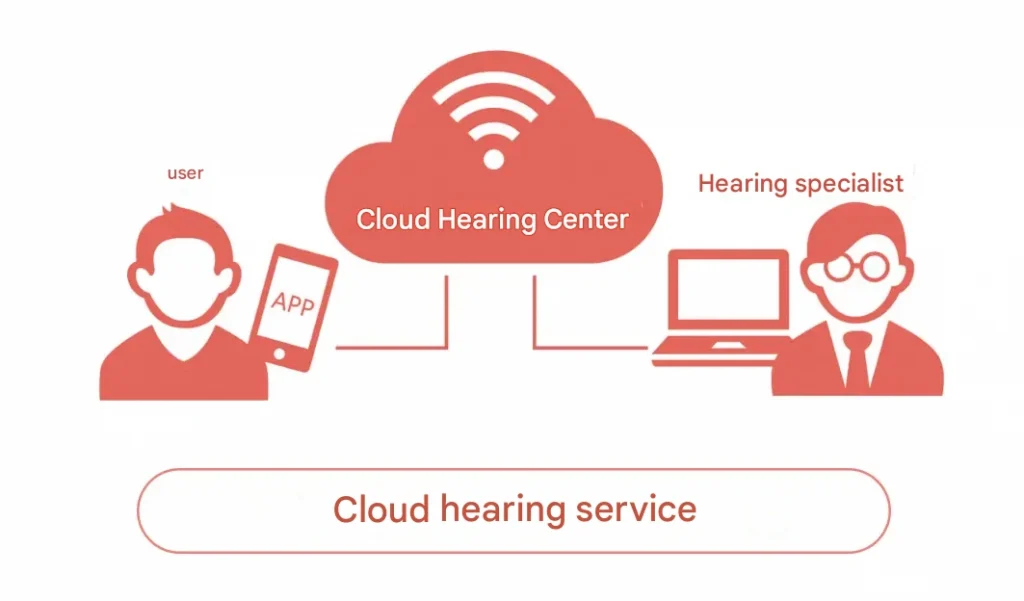
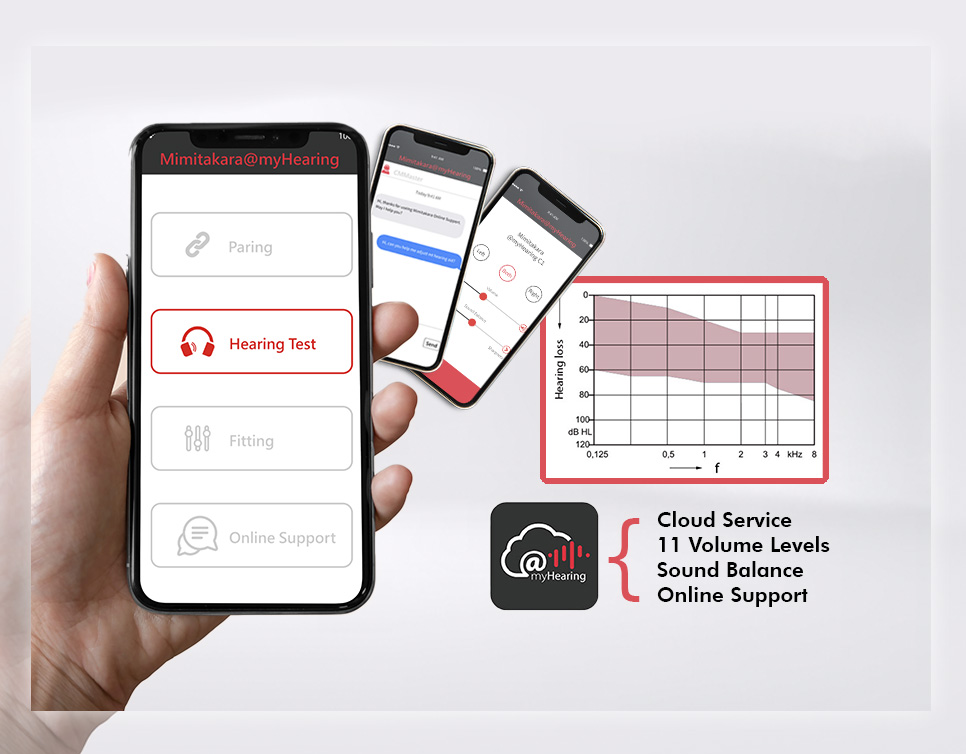
Let people experience the beauty of hearing aids and hear the sounds of their family’s love once again.
If you wish to share that love with Digibionic, please contact us…
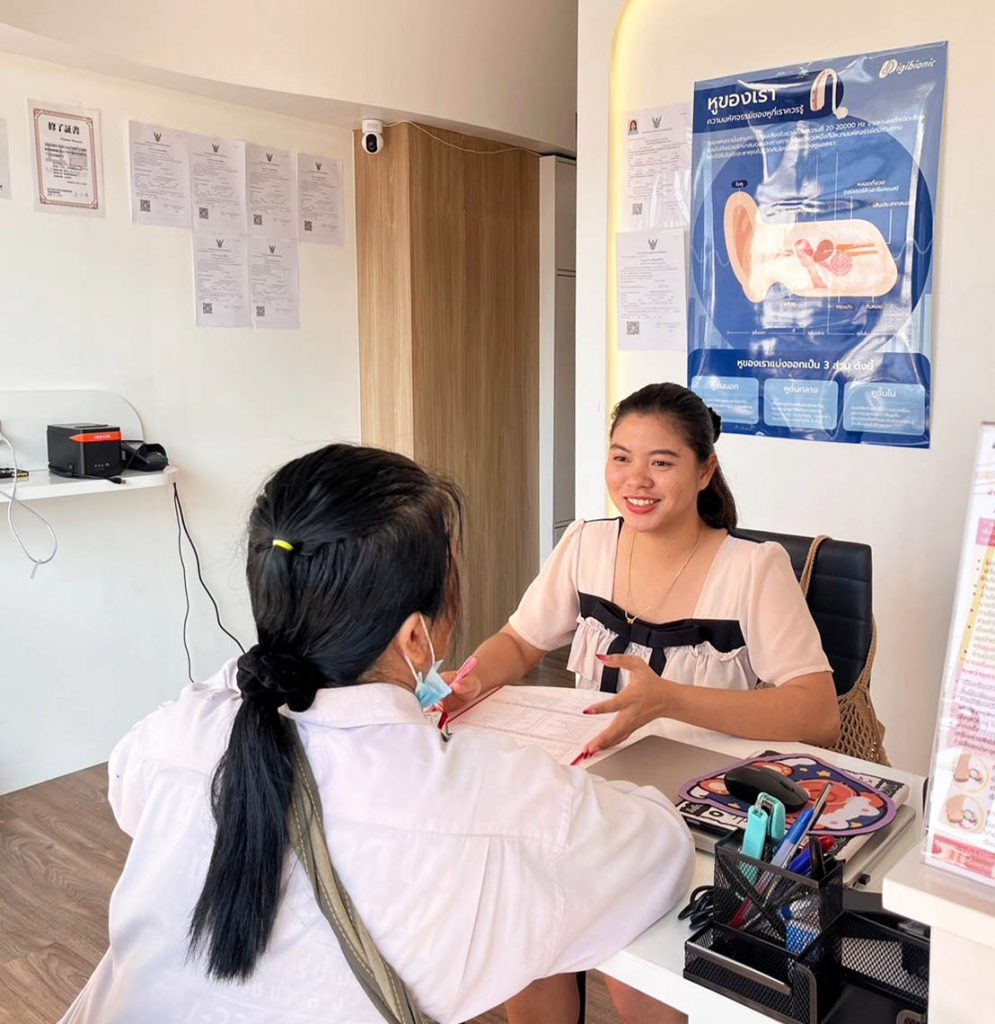
3 Ways to Choose a Hearing Aid: Expensive hearing aids may have many features, but a high-priced hearing aid might not be suitable for you!
Why do hearing aid prices vary by model? One factor that increases the price is the technology, research and development, as well as the capabilities of the hearing aid.
Currently, it is found that up to 80% of seniors experience hearing loss due to age-related auditory nerve degeneration, typically starting between the ages of 60 and 80.
เราใช้คุกกี้เพื่อพัฒนาประสิทธิภาพ และประสบการณ์ที่ดีในการใช้เว็บไซต์ของคุณ คุณสามารถศึกษารายละเอียดได้ที่ นโยบายความเป็นส่วนตัว และสามารถจัดการความเป็นส่วนตัวเองได้ของคุณได้เองโดยคลิกที่ ตั้งค่า